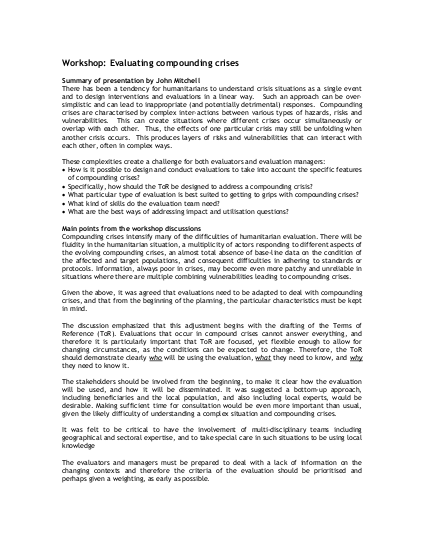22nd ALNAP Meeting (December 2007)

There has been a tendency for humanitarians to understand crisis situations as a single event and to design interventions and evaluations in a linear way. Such an approach can be oversimplistic and can lead to inappropriate (and potentially detrimental) responses. Compounding crises are characterised by complex inter-actions between various types of hazards, risks and vulnerabilities. This can create situations where different crises occur simultaneously or overlap with each other. Thus, the effects of one particular crisis may still be unfolding when another crisis occurs. This produces layers of risks and vulnerabilities that can interact with each other, often in complex ways.
These complexities create a challenge for both evaluators and evaluation managers: • How is it possible to design and conduct evaluations to take into account the specific features of compounding crises? • Specifically, how should the ToR be designed to address a compounding crisis? • What particular type of evaluation is best suited to getting to grips with compounding crises? • What kind of skills do the evaluation team need? • What are the best ways of addressing impact and utilisation questions?
